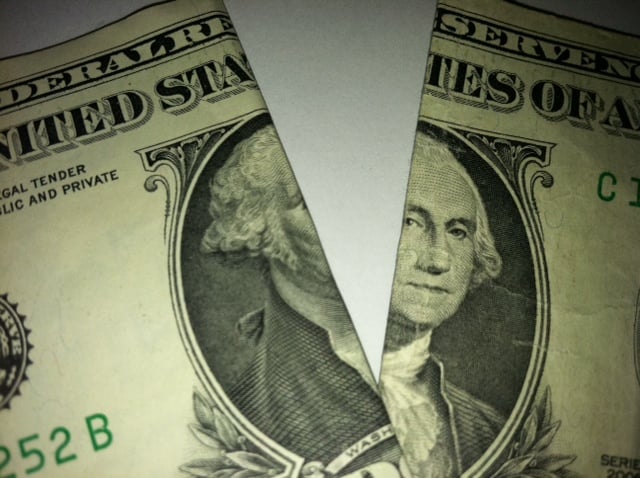Banking, finance, and taxes
Opportunity & Risk: Junk Bond Spreads Nearing 700 Basis Points (HYG, JNK, PHB, HYV, HIO, PHK, JPM, EPD)
Published:
Last Updated:

Investors are just not being rewarded for the risks that they are taking. The question to ask is whether an 8% yield (or higher) in the junk bond sector is enough. Even if defaults reach 3%, that would leave real returns of 5% in some cases.
Another issue may help junk bonds after the dust settles and when these find a bottom in price. On Thursday Goldman Sachs reduced its bond yield expectations due to Euro anxiety and it now expects the 10-year Treasury yield to rise to only about 2.0% over the next two years. Its prior upside target was that bond yields would rise to as high as 2.5%. This is as the 10-year Treasury yield has dipped to under 1.6%.
The Summer heat can be a hard time for high-yield and junk bonds. The summer of 2011 was very hard on the sector and then things managed to get worse yet again in the fall. The J.P. Morgan Chase & Co. (NYSE: JPM) multi-billion dollar trading loss fiasco may have exacerbated the selling in this sector at the end of May. Still, there always seems to be some excuse each year that drives the market and sentiment. They call it “Sell in May and go away!” for a reason.
Junk bonds did not exactly have a good performance in June as you can see in these three key bond ETFs…
iShares iBoxx $ High Yield Corporate Bond (AMEX: HYG) has a 12-month yield of 7.36% and its site lists some $14.3 billion in assets. This one lost more than 3.2% in May and the selling climax on the last day of May was over 10.7 million shares.
SPDR Barclays Capital High Yield Bond (AMEX: JNK) tracks the Barclays Capital High Yield Very Liquid Index and has an implied yield of about 7.7% and it has some $10.5 billion in assets. This ETF lost almost 3.5% in May and the selling climax on the last day of the month was a whopping 18.49 million shares. There was an interesting take here from optionMONSTER’s Depth Charge tracking system: some 3,750 July 38 puts were bought earlier in the week indicating that a rollout was made on a bet or as a hedge that the junk bond market could further weaken ahead.
PowerShares Fundamental High Yield Corp Bond (AMEX: PHB) has a 12-month yield of 5.46% and the company site gave a value of about $927 million. The PowerShares junk bond ETF lost ‘only’ 1.5% in May.
Standard & Poor’s puts out a daily report on credit spreads and the report on the last day of May showed widening spreads in corporate bonds. The investment-grade composite spread widened by 10 basis points to 231 basis points, and it also reported that the speculative-grade composite spread widened by 7 basis points to 698 basis points. Yes, that is effectively 7% higher than the comparable Treasury yield. S&P showed that the ‘BB’ spread rose by 6 basis points to 501 basis points; ‘B’ rose 8 basis points to 738 basis points; and ‘CCC’ rose by 1 basis point to 1,126 basis points.
S&P further noted that speculative-grade spreads are down from their highs reached last October. The report further noted that the speculative-grade composite spread was higher than its one-year moving average of 666 basis points and but is lower than its five-year moving average of 731 basis points.
Here is how some of the closed-end funds in the high-yield junk bond sector did in May:
BlackRock Corporate High Yield Fund V, Inc. (NYSE: HYV) yields 8.3% as of now at $12.37. It lost 2.2 in May but that loss was actually -4.5% from the peak at the start of May.
Western Asset High Income Opportunity Fund Inc. (NYSE: HIO) yields about 8.3%. This closed-end fund lost almost 2% in May but that was almost a 4% loss from the peak in the month.
PIMCO High Income Fund (NYSE: PHK) trades at a huge premium of about 70% to its net asset value due to leverage but its current yield looks to be in the low double-digits of 11.1% now. This one also is not a pure junk bond fund and those yields are due to that leverage. Somehow this fund managed to turn in a gain of about 1.4% during May.
MLP funds and ETFs often compete for investing dollars with junk bond funds due to those high payouts of income and return of capital payments. A fresh downgrade of Enterprise Products Partners, L.P. (NYSE: EPD) highlighted some of the risks that this sector faces going into the summer heat.
Junk bonds by definition carry much higher risks than Treasury bonds. In many cases, the bonds on an individual basis can be volatile like the stocks of the underlying companies. It does not look or feel like that final selling crescendo has been seen yet, but that is always a tough call to make. The risks of junk bonds are rewarded through time but this is always a price-dependent sector.
JON C. OGG
A financial advisor can help you understand the advantages and disadvantages of investment properties. Finding a qualified financial advisor doesn’t have to be hard. SmartAsset’s free tool matches you with up to three financial advisors who serve your area, and you can interview your advisor matches at no cost to decide which one is right for you. If you’re ready to find an advisor who can help you achieve your financial goals, get started now.
Investing in real estate can diversify your portfolio. But expanding your horizons may add additional costs. If you’re an investor looking to minimize expenses, consider checking out online brokerages. They often offer low investment fees, helping you maximize your profit.
Thank you for reading! Have some feedback for us?
Contact the 24/7 Wall St. editorial team.